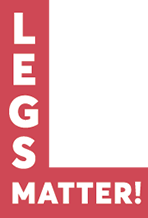Biomechanics is the study of structure, function and motion for your legs, this links to your gait. Your gait is how you walk. Your gait and the biomechanics associated with this are important as poor function affects your healing and other outcomes.
How can your gait and biomechanics impact on your leg or foot health?
Our venous leg ulcer page describes the importance of your calf and foot muscle pumps. These assist your veins in pumping the blood from your feet against the pull of gravity.
Your ankles and their movement are essential in helping your muscle pumps to work well. When your ankle has good mobility, then you can contract your muscles when walking with greater effectiveness. Studies show us that when the ankle function or mobility is reduced, healing of ulcers is slower or even difficult to obtain. This is why understanding how people walk and the function of their ankle is so critical within a lower leg ulcer assessment.
Training and exercises to improve your gait and biomechanics
Simple exercises for your ankles (one at a time) to help stretch your ankle and increase its range of movement:
-
Pull back your foot and hold for 10 seconds
-
Then point your toe into the band for 10 seconds
-
Repeat 5 times each ankle 3 times a day
What should you avoid
Whilst doing your exercises, consider:
- Is one side worse than the other? Does your wound pain stop you from doing this exercise?
- Are there particular practitioners that create a tighter bandage over your ankle and give you problems?
What we know is that wound pain or rubbing from the dressing or bandage can stop people from walking properly. If this is happening to you, please talk to your healthcare professional. A good range of ankle movement is essential for healing so we need to know what is stopping this and thus how we can improve the range.
This is also why the following is really important to avoid:
- Sleeping in your chair with your legs down or slightly elevated. This will create swelling
- Sedentary lifestyle. Getting moving, regular short walks are essential for your legs and your well-being
- Prolonged standing. If you need this as part of your work, then compression socks are essential as well as doing stretching exercises
Getting assessed
To improve your conversation with your healthcare professional, think about the following before your appointment:
How is your walking?
- Are you walking less than you were? Why?
- Are your strides shorter, especially on one leg? Are you limping?
- Do you think your wound or the dressings are impacting on your walking?
Look at your shoes
- Are the heels worn down and more on one side that the other
Additional assessment and support may be possible via your foot health team or a podiatrist and you will need a referral from your nurse, GP or healthcare professional.
Other support
These organisations may be able to give your further advice or support
Accelerate Based in East London, Accelerate can accept national referrals from your GP / specialist to our world-class centre where we pioneer and trial experimental new treatments for chronic leg ulcers / wounds, lymphoedema and mobility challenges.
Contact details
020 3819 6022
hello@acceleratecic.com
Find out more on the Accelerate website
Royal College of Podiatry The Royal College of Podiatry exists to ensure the public has access to high quality foot care delivered by qualified and regulated professionals.
Contact details
020 7234 8620
reception@rcpod.org
Find out more on the Royal College of Podiatry website
Diabetes UK Diabetes UK are the leading UK charity for people affected by diabetes it’s their responsibility to lead the fight against the growing crisis. And this fight is one that involves all everyone – sharing knowledge and taking diabetes on together.
Contact details
0345 123 2399
helpline@diabetes.org.uk
Find out more on the Diabetes UK website
NHS Choices the official NHS website, which provides vital information and support about leg and foot signs and other symptoms.
Contact details
Call 111 - for non-emergency medical advice
Find out more on the NHS Choices website









